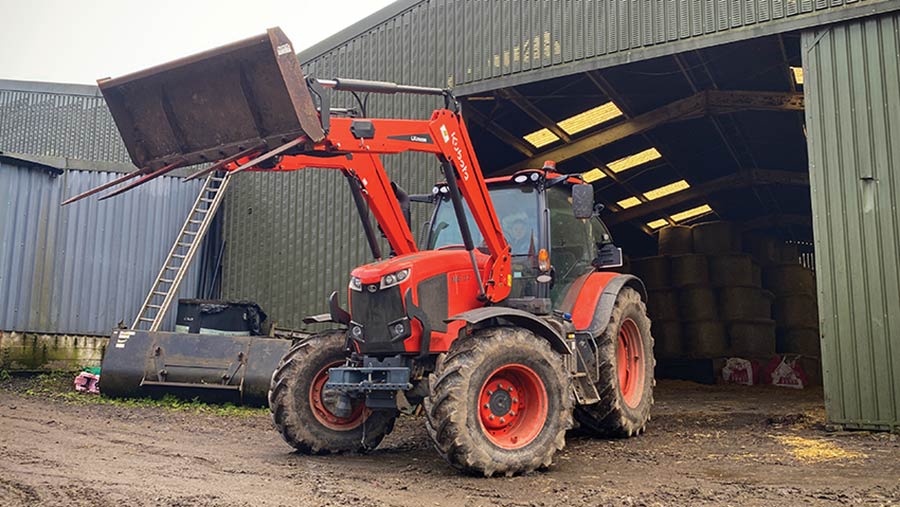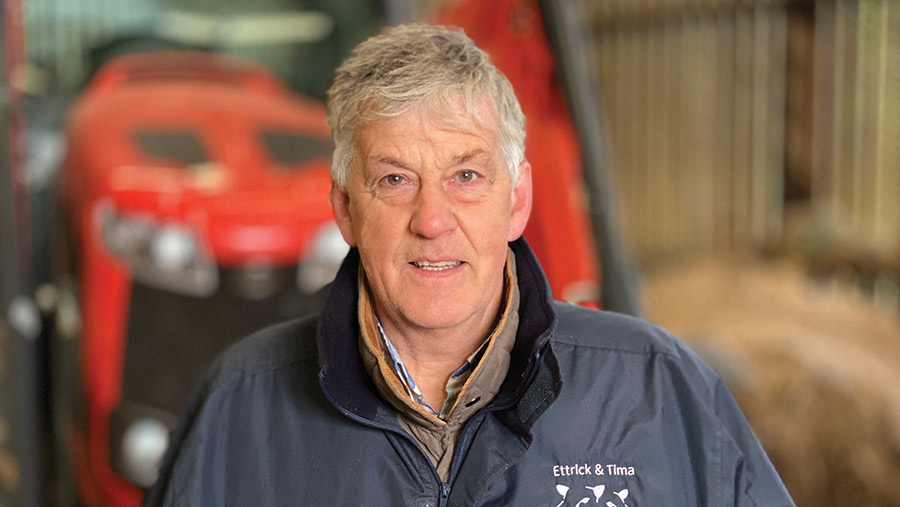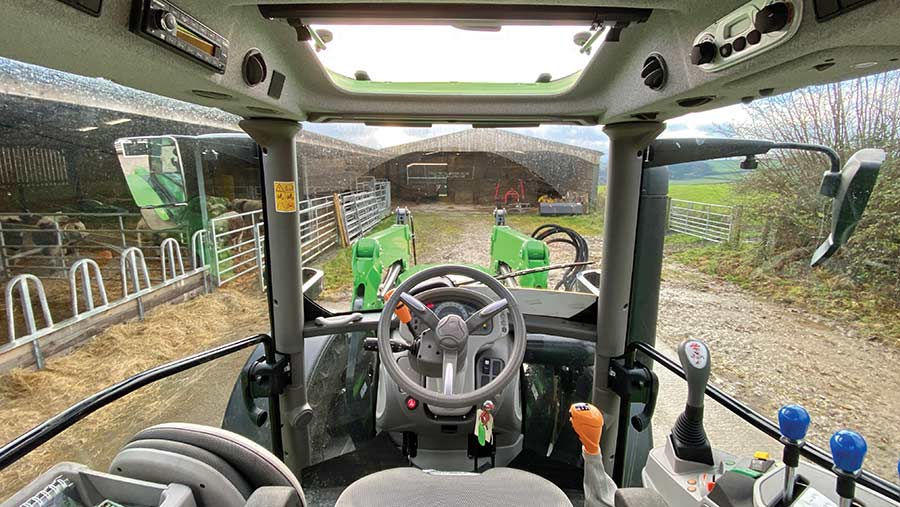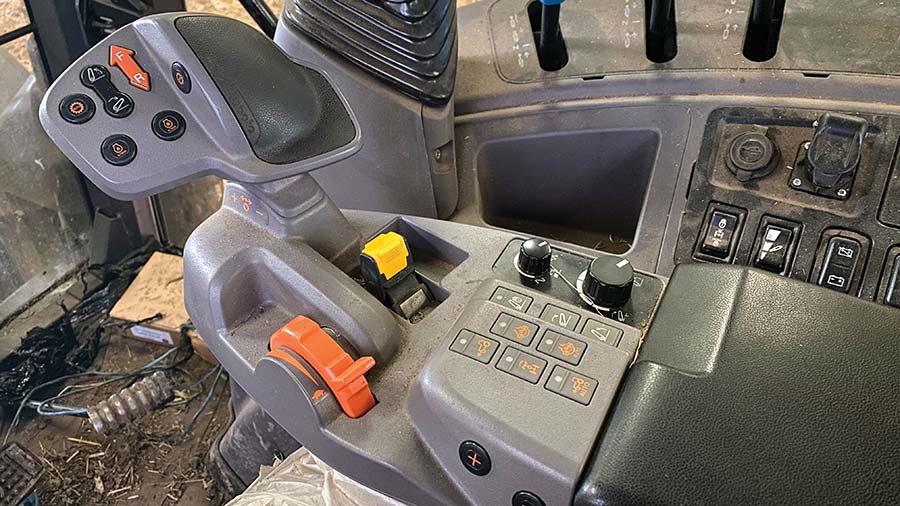Driver’s view: Kubota M6-132 tractor
 © MAG/Oliver Mark
© MAG/Oliver Mark Kubota is now a respected player north of 100hp, having gradually introduced more four-cylinder models that have helped shed its reputation as an amenity and scraper tractor specialist.
The most recent of these come in the five-strong M6 Utility range, which replaced the long-serving M-GXs a couple of years ago.
Two have short wheelbases (2.54m) and run 3.8-litre engines spanning 104hp to 111hp, while the three longer (2.68m) versions get a big-bore 6.1-litre block that puts out 123hp, 133hp or 143hp.
See also: On test: 123-143hp M6002 joins Kubota range
That same engine delivers the same output for a trio of full-fat M6s – dubbed “premiums” by most dealers – that arrived in early 2020 to bridge the gap to the pokier M7s.
Gordon Gray’s Kubota M6-132 specs
- Engine 6.1-litre, four-cylinder Kubota
- Power 133hp (153hp with boost)
- Transmission Three-range, eight-speed 40kph
- Hydraulics 115 litres/min
- Lift capacity 7,000kg
- Price paid £64,500

Gordon Gray © MAG/Oliver Mark
Unlike the little ’uns, they also get a 20hp boost function for road transport, a higher-capacity hydraulic system, and will handle an extra 900kg on the rear links.
And it is one of these that has now clocked 720 hours on Gordon Gray’s 230ha farm near Selkirk, where it’s been mowing, baling and carting feed for 800 commercial cross-bred ewes, 80 pedigree Texels, and 24 Aberdeen Angus cows.
Why a Kubota M6-132?
My son and I don’t tend to change tractors very often. We’ve had our Massey Ferguson 5445 since 2003 and, in 2017, bought a second machine – a 500-hour Kubota M128GX.
Though our neighbours considered Kubotas a bit of a joke at the time, we turned out to be pioneers and there are now loads of them in this area.
We expected to keep it for a decade or two, but then an opportunity to upgrade presented itself.
A like-for-like replacement would have been fine – we’re not particularly fussy buyers – but, for Covid-related reasons, the “premium” model ended up being cheaper than the Utility.
We priced up a load of alternatives, but none could get near Kubota on price. Plus, it had a five-year warranty, and Henderson Grass Machinery, our local dealer, is just a couple of miles away. That’s important as we’re stockmen, not mechanics.

© MAG/Oliver Mark
What extras did you opt for?
It has far more features than we need, so the only thing we specced was the MX-built LK2100M loader.
That said, we also asked Allan White at Hendersons to reduce the track width to ensure it fitted through the sheep shed with the Hustler bale unwinder.
The big front hubs limited the amount they could bring the wheels in, but they managed to shave about 50mm off each side.
That was just enough for what we needed, and not too much that it affected the tractor’s balance.

© MAG/Oliver Mark
How has it performed?
We probably don’t get the most out of all the functions but, with front-axle and cab suspension, and “soft ride” on the loader, it’s the most comfortable tractor we’ve owned.
It notches nicely through the gears with the joystick too – so much so that I rarely bother with the auto mode for the eight powershift steps.
My one major gripe is that it always resets to the bottom of low range on start-up, which is irritating.
That said, there is a software update on the way that will allow it to start in the middle range.
We’ve also had trouble with diesel freezing in the filter after a really cold night.
I think the filter might be too fine, as the telehandlers never have a problem, but we have now replaced it. We’ll find out this winter whether there’s any difference.
The extra size and power over our old model have proved handy, particularly with the 20hp boost when carting bales.
The longer wheelbase means it seldom needs ballasting either – it handles the mower-conditioner without being too unbalanced and, although we’ve got a rear linkage weight for loader work, we don’t usually need it.
Visibility from the cab is good as well – the pillars are slim, there’s loads of glass and the doors are big, which makes it easy to get in and out without moving the steering wheel.
There are a couple of things I’d change, though. The first is the handbrake.
It sticks into the footwell and, for the first month, I was constantly knocking it with my leg as I climbed out. And I’d put a cover over the armrest buttons, as I periodically knock them as I’m bouncing along.
Likes and gripes
Likes
- Good visibility
- Comfortable cab
- Tight turning circle
- Power boost for transport
Gripes
- Always starts in low range
- Handbrake easy to knock
- Diesel filter problems
- No cover for armrest buttons

